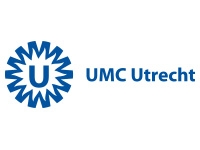Early detectioN of thromboemboliC sources And smalL vOlume stroke with SpEctral ct
Seventy percent of patients with acute ischemic stroke symptoms do not have a large artery occlusion but suffers from TIA or small volume infarcts. Detection of small volume stroke is difficult, but important since dedicated treatment is required. In addition both small volume stroke and TIA patients are at an increased risk for recurrent stroke, which can result in severe disability. To facilitate acute treatment and prevention of recurrent stroke we will develop an innovative CT protocol to detect thrombo-embolic causes of small volume stroke and TIA on admission, and improve early recognition of small volume stroke. ENCLOSE will thus contribute to the early recognition of patients at high risk for suffering a serious clinical event leading to fewer fatalities, fewer people developing irreparable damage, and fewer people living with disabilities.
The last couple of years the applicability of CT in acute ischemic stroke evaluation has been questioned, especially when comparing its performance to MRI imaging. Due to the low signal to noise ratio of CT-perfusion (CTP), most experts agree that CT is secondary to MRI when it comes to patient treatment selection. We believe that application of spectral CT and innovative image processing will increase the signal-to noise ratio, spatial resolution and tissue contrast altogether improving the clinical reliability and impact of CT. This will be well received, since no less than 80% of hospitals use CT instead of MRI for acute stroke imaging according to the Stroke Imaging Repository. This indicates the enormous potential for utilization of our innovations. To this end we will conduct a prospective clinical study that allows for evaluation of the new CT protocol and implement and evaluate new CT image processing methods.
To achieve this, the researchers have introduced an innovative scanning protocol in which the heart is always scanned in the event of a suspected cerebral infarction. Scanning the heart, in particular with Spectral CT, turned out to have important added value. It allows the detection of thrombi in the heart. The presence of a thrombus in the heart was related to a higher stroke severity and helped to identify with more certainty a cardioembolic source (etiology) of the stroke and thereby improve treatment.



